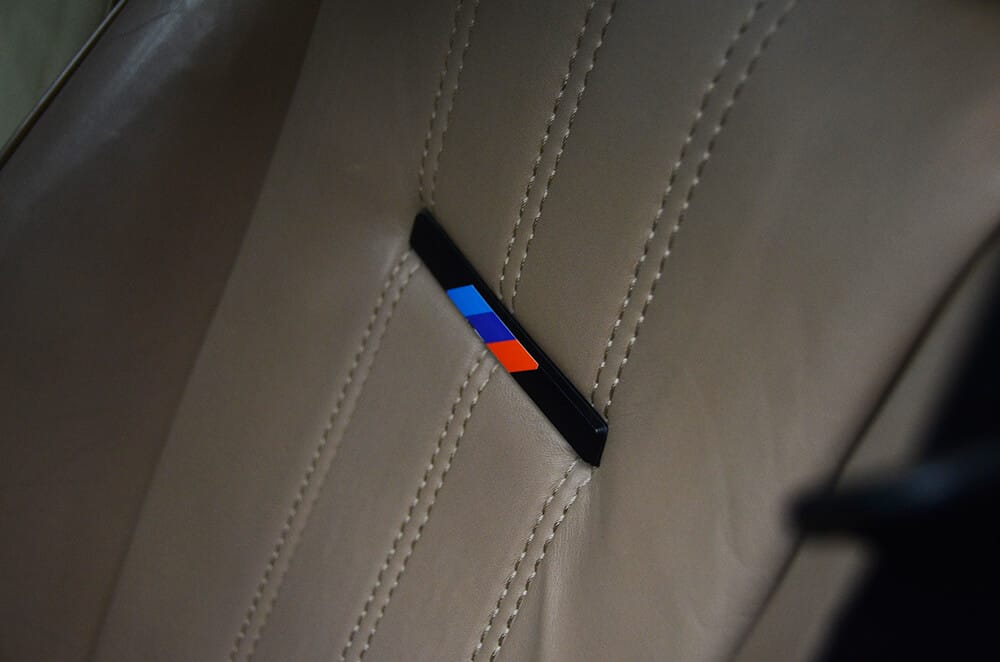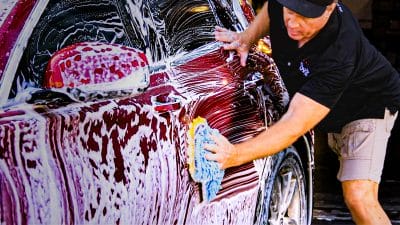Last Updated November 11, 2024
Leather seats in cars look amazing and feel luxurious, but they do require care to stay looking and feeling their best. One of the most important aspects of leather care is conditioning, as it keeps leather soft, prevents cracks, and helps it last longer.

Here’s the question — how often should you condition leather seats? Should you condition new leather seats when you first get them? This article will answer these questions and provide some simple leather seat care tips.
Why Should You Condition Leather Seats?
Because it is a natural material, leather can dry out, crack, or fade over time. Conditioning leather is like using lotion on dry skin—it keeps the material moisturized and protected.
Without regular conditioning, leather can lose its softness, crack and even fade in color.
Here are the main benefits of conditioning leather seats:
- Prevents Drying and Cracking: Leather can dry out due to heat, sunlight, or regular use. Conditioning keeps it hydrated and flexible.
- Protects Against Color Fading: Many leather conditioners include UV protection, which helps prevent fading from sunlight.
- Maintains Even Appearance: Conditioning restores richness of color and makes leather look fresh and clean.
- Helps Reduce Wear: Softening leather by conditioning helps reduce abrasion and wear between the surface and your body.
You should condition leather every 3-6 months.
How Often Should You Condition Leather Seats?
You should condition leather every three to six months. This can vary depending on how often you drive the car and what sort of traffic it sees.
- For Low Traffic Leather: Conditioner leather once a year.
- For Medium Traffic Leather: Condition once every 6 months.
- For High Traffic Leather: Condition leather every 3 months.
Should You Condition New Leather Seats?
You might wonder if new leather seats need conditioning. The fact is, even new leather seats can benefit from conditioning. This helps “break in” the leather more quickly, softening the ridgid factory-fresh leather. Plus, conditioning is protection, and early protection is the best protection there is — so condition those new seats!

Signs That Leather Seats Need Conditioning
It’s not always easy to know when to condition leather seats, but here are some signs to watch for:
- The leather feels dry or stiff to the touch.
- You notice small cracks or creases forming.
- The leather looks dull or faded.
- Spills or dirt don’t wipe away easily.
If you notice any of these signs, it’s time to clean and condition the leather.
Conditioning new seats helps “break” them in by softening the rigid factory-fresh leather.
How to Condition Leather Seats
Conditioning leather seats is a straightforward process. Follow these steps to keep your leather looking and feeling great:
- Clean the Leather: Before applying conditioner, clean the seats with a leather cleaner or a damp, lint-free cloth. This removes dirt and oils so the conditioner can penetrate the leather properly.
- Choose the Right Conditioner: Make sure to use a product that maintains the natural matte finish of your leather.
- Apply the Conditioner: Use an applicator or microfiber towel to apply a small amount of conditioner to the leather. Work it in with circular motions, making sure to cover the entire surface.
- Let It Absorb: Allow the conditioner to soak into the leather for 15 minutes. This helps the leather absorb the moisture it needs.
- Wipe Away Excess: Use a clean, dry cloth to remove any leftover conditioner

Tips for Keeping Leather Seats in Good Condition
In addition to conditioning, here are some simple tips to maintain leather seats:
- Clean Spills Quickly: Wipe up any spills immediately to prevent stains.
- Use a Sunshade: Protect car seats from direct sunlight by using a sunshade or parking in the shade.
- Vacuum Regularly: Remove dirt and debris with a vacuum or soft brush to avoid scratches.
- Avoid Harsh Chemicals: Don’t use cleaning products that aren’t made for leather, as they can cause damage.
- Cover Seats: For extra protection, consider using seat covers during messy activities, like transporting pets or kids.
- Apply Ceramic Coating: Apply a ceramic coating designed for leather to provide hydrophobic protection against spills and stains.





I have perforated leather seats. Will your products clog the holes ?
No. We’ve tested our products on all types of leather including perforated, stitched, aniline, etc. Just be sure to spread the product evenly and allow time for the conditioner to be absorbed.